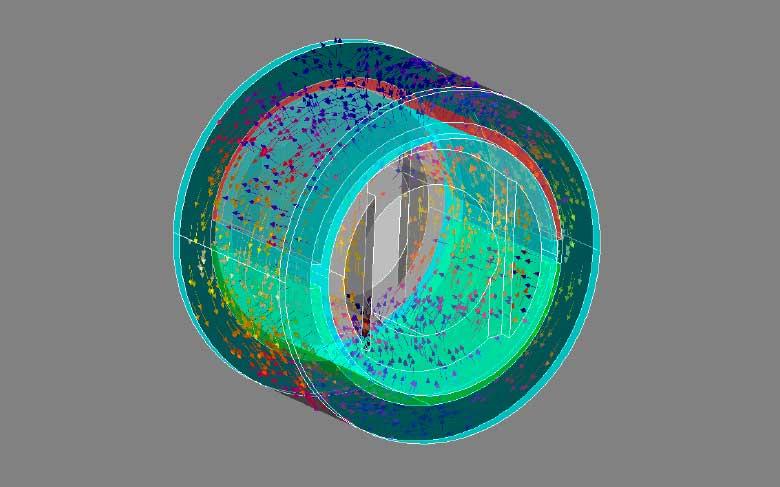MADE | New materials and manufacturing routes for a new generation of electromechanical devices
The MADE project is being launched in an effort to research and develop new materials and manufacturing routes to create a new generation of electromechanical devices. Convinced of the synergies that may arise between the partners, the MADE consortium spans a wide range of application sectors where a high degree of electrification growth is expected, or that are already 100% electrified.
The electrical motors and actuators targeted by the MADE project are:
- Electric lifting motors.
- Electric actuators for space applications.
The MADE project is being launched in an effort to research and develop new materials and manufacturing routes to create a new generation of electromechanical devices. Convinced of the synergies that may arise between the partners, the MADE consortium spans a wide range of application sectors where a high degree of electrification growth is expected, or that are already 100% electrified.
The electrical motors and actuators targeted by the MADE project are:
- Electric lifting motors.
- Electric actuators for space applications.
- Electric traction motors for electric vehicles.
- Electric motors for marine propulsion.
Advantages of developing components based on AM technologies
- Lower weight of actuators for space and aeronautics applications
- Expanded range of actuators that can be electrified
- Improved use of materials and, therefore, lower actuator cost
- HIGHLIGHTS:
- Create new hard magnetic formulations that will reduce Europe”s dependency on the supply of rare-earth elements, such as neodymium and dysprosium, whose market is dominated by China (85%), and thus lower their cost.
- Improve the magnetic properties of today”s related permanent magnets by around 5%.
- Reduce NdFeB alloy consumption by 20-30% through new consolidation technologies that enable the design of more complex geometries.
- Create new soft magnetic formulations that can be processed using the LMD (Laser Metal Deposition) additive manufacturing technology, none of which exist so far.
- Substantially improve the gas atomization process to produce high-performance soft magnetic alloy powders (50-60%) in the particle size range of 50 to 150 μm used in LMD.
- Reduce the weight of the rotor in lifting motors by 60%, improve their performance by 40% and reduce their manufacturing costs by 35% by making them using LMD.
- Create innovative concepts in magnetic motors for actuators in aerospace applications with considerable weight reduction (30%), compactness (10% smaller volume), consumption, torque and cost by applying efficient advanced manufacturing methods (additive (SLM) and traditional).
- Provide the marine sector with new high-strength magnets that can be used on the surface without the current loss and heating problems (reduce losses by 85%), and thereby increase its competitiveness.
- Provide the automotive sector with new permanent magnets injected directly into the rotor, which will allow the in-situ manufacture of rotors without any material residue and the adoption of more electromagnetically suitable magnet geometries.
- Provide a robust and optimized process based on BJ (Binder Jetting) technology, aimed primarily at aerospace applications, and applicable to special materials (low-alloy steels, special steels or stainless steels).
- Create a new BJ additive manufacturing process that will yield properties comparable to those obtained by MIM (Metal Injection Molding) (densities of around 98%) and a lightening of the selected component by 10% (material saving of 30-55%), as a supplement to MIM technology to enable shorter series.
Methodology of the MADE project
The specifications, raw materials and manufacturing routes will be studied for each target application, its components will be designed and prototypes will be manufactured for validation. Sener Aerospace & Defense is leading and coordinating the “Space Actuators” application.
 Innovations provided by the MADE project
Innovations provided by the MADE project
- Made allows research into new materials to manufacture the critical components of electromechanical devices:
- Hard magnetic materials (permanent magnets) with a lower dependence on rare-earth elements, improved temperature performance and lower electromagnetic losses.
- Soft magnetic materials to improve performance in terms of the magnetic permeability of stator and rotor magnetic circuits, and explore new three-dimensional geometrical shapes that increase the torque/force density.
- Materials for structural components to lower their weight and reduce their inertia.
-
Research advanced technologies to design and manufacture critical components:
- Gas atomization to manufacture the dust needed for soft and hard magnetic materials, in order to optimize their sphericity and microstructure for the component manufacturing route.
- Advanced manufacture of magnetic components, including the additive manufacture of these components. Specifically, there are plans to investigate the potential of the following techniques:
-
Binder Jetting (BJ).
-
Laser Metal Deposition (LMD).
-
Selective Laser Melting (SLM).
-
Hot Press (HP).
-
Metal Injection Molding (MIM).
-
-
Electromagnetic and mechanical topological design and optimization of the components (active and structural) in electric motors and actuators based on the application requirements and their functional characteristics.
ACTION CO-FINANCED BY THE BASQUE GOVERNMENT AND THE EUROPEAN UNION THROUGH THE EUROPEAN REGIONAL DEVELOPMENT FUND 2014-2020 (FEDER) AND FINANCED WITH CDTI FUNDS.

 About us
About us
















 Innovations provided by the MADE project
Innovations provided by the MADE project
